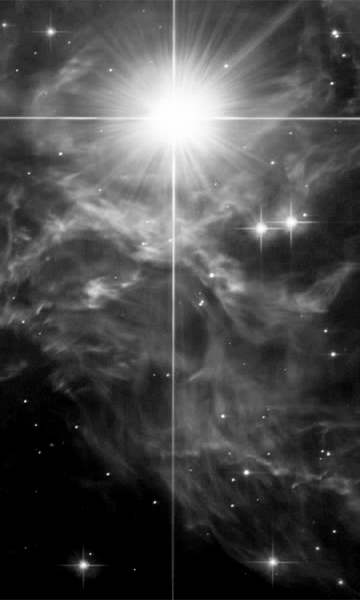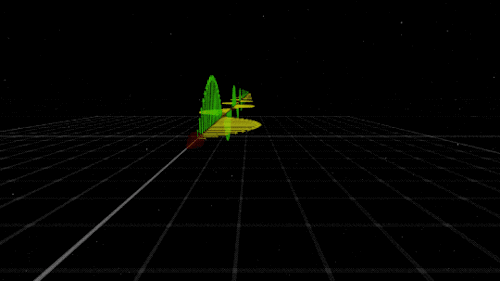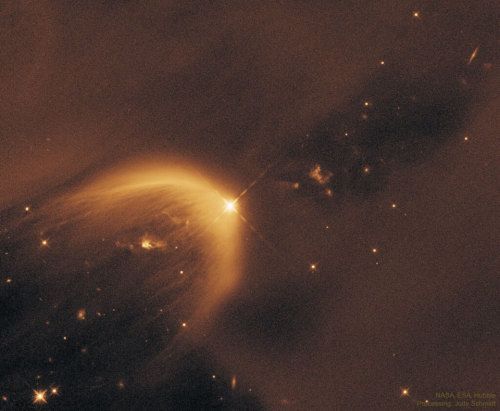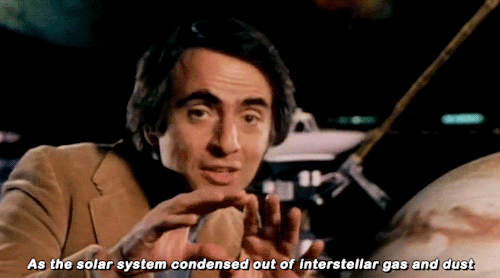
dangerous-space
22 year old space blogger•Not just a space blogger.Also a worrier. •
75 posts
Latest Posts by dangerous-space
Looks like I’m giving this dead blog a new purpose - a thoughts board on protecting modern society and the advancement of eco-friendly technological domination*.
(*Not dominating the world, but the market.)
Lithium is running out on Earth. We’ve detected at most, 70 years’ worth of lithium in the crust. We have less than that much time to figure out how to mine ice asteroids containing lithium to bring back to Earth, as well as mining lithium from Mars.
Mars is a corpse of a planet and can never be revived, so it’s better to try to convert it into a mining planet - unless we figure out how to restore and repair a planet’s magnetic field and core. Mars’ core is not solid enough. It’s not worth it to even consider turning it into a New Eden for humanity. I will be spending time attempting to learn everything possibly required to even be qualified to give an opinion on astronomy, astrophysics/physics, chemistry, and environmental science. My best won’t be the best, but hey. I do what I can. If anybody knows something about trying to live without lithium and still have a society that lives with eco-pos technology to keep thriving and surviving on this miserable little ball of suffocation, please do share.
Who Was Mary W. Jackson?

On June 24, 2020, NASA announced the agency’s headquarters building in Washington, D.C., was to be named after Mary W. Jackson, the first African American female engineer at NASA.
Jackson’s story — along with those of her colleagues Katherine Johnson, Dorothy Vaughan, and Christine Darden — was popularized with the release of the “Hidden Figures” movie, based on Margot Lee Shetterly’s book by the same name.
Today, as the accomplishments of these women are brought to light, we celebrate them as Modern Figures — hidden no longer. Despite their recent recognition, we cannot forget the challenges that women and BIPOC faced and continue to face in the STEM fields.

Background
Jackson showed talent for math and science at an early age. She was born in 1921 in Hampton, Virginia, and attended the all-Black George P. Phenix Training School where she graduated with honors. She graduated from Hampton Institute (now Hampton University) in 1942 with a bachelor of science degree in both mathematics and physical sciences.
Jackson worked several jobs before arriving at the National Advisory Committee on Aeronautics (NACA), the precursor organization to NASA. She was a teacher, a receptionist, and a bookkeeper — in addition to becoming a mother — before accepting a position with the NACA Langley Aeronautical Laboratory’s segregated West Area Computers in 1951, where her supervisor was Dorothy Vaughan.

Accomplishments
After two years in West Computing, Jackson was offered a computing position to work in the 4-foot by 4-foot Supersonic Pressure Tunnel. She was also encouraged to enter a training program that would put her on track to become an engineer — however, she needed special permission from the City of Hampton to take classes in math and physics at then-segregated Hampton High School.
She completed the courses, earned the promotion, and in 1958 became NASA’s first African-American female engineer. That same year, she co-authored her first report, “Effects of Nose Angle and Mach Number on Transition on Cones at Supersonic Speeds.” By 1975, she had authored or co-authored 12 NACA and NASA technical publications — most focused on the behavior of the boundary layer of air around an airplane.

Legacy
Jackson eventually became frustrated with the lack of management opportunities for women in her field. In 1979, she left engineering to become NASA Langley’s Federal Women’s Program Manager to increase the hiring and promotion of NASA’s female mathematicians, engineers, and scientists.
Not only was she devoted to her career, Jackson was also committed to the advancement of her community. In the 1970s, she helped the students in the Hampton King Street Community Center build their own wind tunnel and run experiments. She and her husband Levi took in young professionals in need of guidance. She was also a Girl Scout troop leader for more than three decades.
Jackson retired from Langley in 1985. Never accepting the status quo, she dedicated her life to breaking barriers for minorities in her field. Her legacy reminds us that inclusion and diversity are needed to live up to NASA’s core values of teamwork and excellence.

Make sure to follow us on Tumblr for your regular dose of space: http://nasa.tumblr.com.

Taurus Molecular Cloud
Why is the final phase so difficult?Sorry if I sound dumb,I'm just curious.Also,what will be the rover's first task after landing?
Will the robot be able to send vedio footage?
How will the audio feed from Perseverance make its way back to Earth?
Perseverance Rover’s Descent and Touchdown on Mars (Official NASA Video)
This is beyond amazing.
Hello!! Its wonderful to be able to ask questions, thank you!
About Perseverance, does it have a self-repair option? And as Curiosity is still operational, will they run missions together? Or will they split up to cover more distance?
Is this a sign that we're close to being able to set foot on Mars?
My final question is how do you receive the messages from such a long distance?
Thanks for all your hard work! 加油/Good luck!
“Is this a sign that we are close to being able to set foot on Mars?”

Moon Rising Between Starships via NASA https://ift.tt/3bl4Fak
What’s that on either side of the Moon? Starships. Specifically, they are launch-and-return reusable rockets being developed by SpaceX to lift cargo and eventually humans from the Earth’s surface into space. The two rockets pictured are SN9 (Serial Number 9) and SN10 which were captured near their Boca Chica, Texas launchpad last month posing below January’s full Wolf Moon. The Starships house liquid-methane engines inside rugged stainless-steel shells. SN9 was test-launched earlier this month and did well with the exception of one internal rocket that failed to relight during powered descent. SN10 continues to undergo ground tests and may be test-launched later this month.
(Published February 22, 2021)

A Venus Flyby via NASA https://ift.tt/3sv3XhX
On a mission to explore the inner heliosphere and solar corona, on July 11, 2020 the Wide-field Imager on board NASA’s Parker Solar Probe captured this stunning view of the nightside of Venus at distance of about 12,400 kilometers (7,693 miles). The spacecraft was making the third of seven gravity-assist flybys of the inner planet. The gravity-asssist flybys are designed to use the approach to Venus to help the probe alter its orbit to ultimately come within 6 million kilometers (4 million miles) of the solar surface in late 2025. A surprising image, the side-looking camera seems to peer through the clouds to show a dark feature near the center known as Aphrodite Terra, the largest highland region on the Venusian surface. The bright rim at the edge of the planet is nightglow likely emitted by excited oxygen atoms recombining into molecules in the upper reaches of the atmosphere. Bright streaks and blemishes throughout the image are likely due to energetic charged particles, and dust near the camera reflecting sunlight. Skygazers from planet Earth probably recognize the familiar stars of Orion’s belt and sword at lower right.
(Published February 25, 2021)
Persy sings! How wonderful ☺️
What is the weirdest thing you had to account for when building the perseverance rover?

Milky Way at Dowerin, Western Australia
Nikon d5500 - 35mm - ISO 4000 - f/2.5 - Foreground: 5 x 20 seconds - Sky: 11 x 30 seconds - iOptron SkyTracker

This is Caldwell 109! 🎆🎆🎆
This “phantom snowball” planetary nebula shows ornate, beautiful shapes like spirals of gas that we’ll likely see when the Sun dies as well. It was also the last picture I needed to finish my Caldwell collection - such a great way to end a remarkable astrophotography experience! 🍭🍭🍭
Taken by me (Michelle Park) using the Slooh Canary Two telescope on November 10th, 2020 at 02:22 UTC.
During my book writing this NaNoWriMo, I came up with my own "humans are weird" concept!
You know, within a lot of stories, aliens are more advanced than us (technology). Have more senses than us (heat vision). Maybe have stronger senses than us (like hearing). But what if we have an advantage somewhere? Like maybe... We see more colors than they can?
In my book, one of my aliens cannot see the color red like the human can. I'd say she was "color blind", except this is just how all of her species see, so it's not a disability.
It's not as if she can't see red altogether, it just is a much duller color than what the human sees. Nearly brown. But it also happens to be the main color of her planet's environment.
This poses as a problem. See, her ship is red, and many of her outfits are red. These items are meant to blend in with the environment while moving across the planet.
A human visitor crashed on said planet, and our alien needs to go out to spy on then, see if they are friend or foe.
But the human, well, they sees her no matter where our alien protagonist moves. Incredibly well. Flying in over the mountains to come check on our human visitor? Human is already staring at the ship before it lands. Hiding behind a bush to observe the visitor? Human sees them immediately.
Once proper contact is made, our alien then asks about this. "Why were you always able to see me?" And the human seems confused.
"With all that bright red? I'd see you from a mile away!"
With proper research and observation, our alien comes to learn that the human sees basically a bright beacon against a dull background. But to our alien's eyes? It's all the same color.

Timelapse of Cepheid variable star RS Puppis taken by the Hubble Space Telescope. Light echoes ripple through the surrounding nebula as the star pulses in a 41 day cycle.

M16, Within The Heart










Digital Spacescapes by Tim Barton


This is the Tarantula Nebula! 🕷🕸🕷🕸🕷🕸
This star forming region is so big that it is 160,000 light years across! At it’s center, there are a bunch of stars totalling 450,000 solar masses that produce the Tarantula Nebula’s high luminosity and will likely become a vibrant globular cluster. ✨✨✨
Taken by me (Michelle Park) using the Slooh Chile One telescope on November 16th, 2020 at 5:27 UTC.


Cathedral to Massive Stars by NASA’s Marshall Space Flight Center









Purple dreaming ✨ gifs made by me :)




NASA and SpaceX launch astronauts Robert Behnken and Douglas Hurley to the International Space Station. [May 30th, 2020]
May the Four Forces Be With You!
May the force be with you? Much to learn you still have, padawan. In our universe it would be more appropriate to say, “May the four forces be with you.”

There are four fundamental forces that bind our universe and its building blocks together. Two of them are easy to spot — gravity keeps your feet on the ground while electromagnetism keeps your devices running. The other two are a little harder to see directly in everyday life, but without them, our universe would look a lot different!
Let’s explore these forces in a little more detail.
Gravity: Bringing the universe together

If you jump up, gravity brings you back down to Earth. It also keeps the solar system together … and our galaxy, and our local group of galaxies and our supercluster of galaxies.
Gravity pulls everything together. Everything, from the bright centers of the universe to the planets farthest from them. In fact, you (yes, you!) even exert a gravitational force on a galaxy far, far away. A tiny gravitational force, but a force nonetheless.

Credit: NASA and the Advanced Visualization Laboratory at the National Center for Supercomputing and B. O'Shea, M. Norman
Despite its well-known reputation, gravity is actually the weakest of the four forces. Its strength increases with the mass of the two objects involved. And its range is infinite, but the strength drops off as the square of the distance. If you and a friend measured your gravitational tug on each other and then doubled the distance between you, your new gravitational attraction would just be a quarter of what it was. So, you have to be really close together, or really big, or both, to exert a lot of gravity.
Even so, because its range is infinite, gravity is responsible for the formation of the largest structures in our universe! Planetary systems, galaxies and clusters of galaxies all formed because gravity brought them together.
Gravity truly surrounds us and binds us together.
Electromagnetism: Lighting the way

You know that shock you get on a dry day after shuffling across the carpet? The electricity that powers your television? The light that illuminates your room on a dark night? Those are all the work of electromagnetism. As the name implies, electromagnetism is the force that includes both electricity and magnetism.
Electromagnetism keeps electrons orbiting the nucleus at the center of atoms and allows chemical compounds to form (you know, the stuff that makes up us and everything around us). Electromagnetic waves are also known as light. Once started, an electromagnetic wave will travel at the speed of light until it interacts with something (like your eye) — so it will be there to light up the dark places.

Like gravity, electromagnetism works at infinite distances. And, also like gravity, the electromagnetic force between two objects falls as the square of their distance. However, unlike gravity, electromagnetism doesn’t just attract. Whether it attracts or repels depends on the electric charge of the objects involved. Two negative charges or two positive charges repel each other; one of each, and they attract each other. Plus. Minus. A balance.
This is what happens with common household magnets. If you hold them with the same “poles” together, they resist each other. On the other hand, if you hold a magnet with opposite poles together — snap! — they’ll attract each other.
Electromagnetism might just explain the relationship between a certain scruffy-looking nerf-herder and a princess.
Strong Force: Building the building blocks

Credit: Lawrence Livermore National Laboratory
The strong force is where things get really small. So small, that you can’t see it at work directly. But don’t let your eyes deceive you. Despite acting only on short distances, the strong force holds together the building blocks of the atoms, which are, in turn, the building blocks of everything we see around us.
Like gravity, the strong force always attracts, but that’s really where their similarities end. As the name implies, the force is strong with the strong force. It is the strongest of the four forces. It brings together protons and neutrons to form the nucleus of atoms — it has to be stronger than electromagnetism to do it, since all those protons are positively charged. But not only that, the strong force holds together the quarks — even tinier particles — to form those very protons and neutrons.
However, the strong force only works on very, very, very small distances. How small? About the scale of a medium-sized atom’s nucleus. For those of you who like the numbers, that’s about 10-15 meters, or 0.000000000000001 meters. That’s about a hundred billion times smaller than the width of a human hair! Whew.
Its tiny scale is why you don’t directly see the strong force in your day-to-day life. Judge a force by its physical size, do you?
Weak Force: Keeping us in sunshine

If you thought it was hard to see the strong force, the weak force works on even smaller scales — 1,000 times smaller. But it, too, is extremely important for life as we know it. In fact, the weak force plays a key role in keeping our Sun shining.
But what does the weak force do? Well … that requires getting a little into the weeds of particle physics. Here goes nothing! We mentioned quarks earlier — these are tiny particles that, among other things, make up protons and neutrons. There are six types of quarks, but the two that make up protons and neutrons are called up and down quarks. The weak force changes one quark type into another. This causes neutrons to decay into protons (or the other way around) while releasing electrons and ghostly particles called neutrinos.
So for example, the weak force can turn a down quark in a neutron into an up quark, which will turn that neutron into a proton. If that neutron is in an atom’s nucleus, the electric charge of the nucleus changes. That tiny change turns the atom into a different element! Such reactions are happening all the time in our Sun, giving it the energy to shine.
The weak force might just help to keep you in the (sun)light.

All four of these forces run strong in the universe. They flow between all things and keep our universe in balance. Without them, we’d be doomed. But these forces will be with you. Always.
You can learn more about gravity from NASA’s Space Place and follow NASAUniverse on Twitter or Facebook to learn about some of the cool cosmic objects we study with light.
Make sure to follow us on Tumblr for your regular dose of space: http://nasa.tumblr.com


Ion Tail of Comet Swan

M16, Eagle Nebula

LDN 1471: A Windblown Star Cavity via NASA https://ift.tt/2ywsXin

Carina, Clouds and Stardust








COSMOS: A Personal Voyage (1980) written by Carl Sagan, Ann Druyan, and Steven Soter